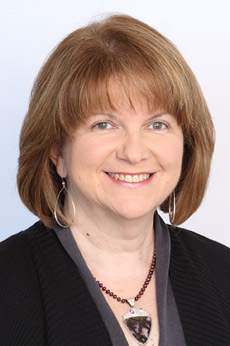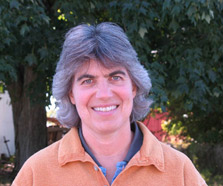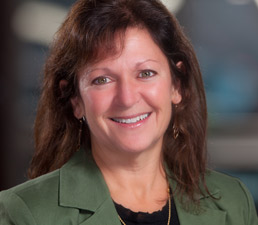Hello. Wéi. Bonjour. Hola. Guten Tag. Moshi Moshi. Habari. Ciao. These are just some of the greetings one might hear in the modern nursing home.
Up to 40 percent of the U.S. population is made up of immigrants or first-generation Americans, and fewer and fewer facilities are homogeneous. While it is unrealistic to expect everyone to know about all of the world’s ethnicities, languages, and cultural traditions, facilities should promote cultural competence among staff and mutual respect among residents from different backgrounds.
Cultural competence generally is defined as a set of behaviors, attitudes, and policies that enable staff to work and function effectively and congruously in cross-cultural situations. According to the National Institutes of Health (NIH), cultural competency is “critical to reducing health disparities and improving access to high-quality health care…that is respectful of and responsive to the needs of diverse patients.”
NIH further says that cultural competency benefits consumers, stakeholders, and communities and supports positive health outcomes.
Now In The Rulebook
While cultural competence is a greater challenge for facilities that have staff or residents from all over the world, it is something all facilities need to consider. The implementation of the Affordable Care Act (ACA) has increased the urgency for cultural competence, as the bill includes several provisions aimed at reducing health disparities and improving care for racially and ethnically diverse patient populations.
For example, the ACA calls for data collection and reporting by race, ethnicity, and language and monitoring of diversity in the health care workforce, including long term care. It also allocates aid for the development and dissemination of model cultural competence training and education curricula.
Of course, national attention to diversity and cultural competency didn’t begin with the ACA. Back in 2004, the Institute of Medicine released the report, “In the Nation’s Compelling Interest: Ensuring Diversity in the Health Care Workforce.” The report recommended specific steps to improve admissions policies and practices, reduce financial barriers to health profession training, encourage diversity efforts through accreditation, and improve institutional climates for diversity.
It also called for applying community benefit principles to diversity efforts and developing mechanisms to encourage support for them.
A Growing Need
“There is a tremendous need to get to know the values, beliefs, customs, and practices of individuals who live in today’s nursing homes,” says Jay Sackman, president of Jay M. Sackman Consulting Services in Redding, Conn. “This should start with a proactive role by admissions to get to know people’s backgrounds, etc. Direct care staff need to know about their residents from day one.” The need to address diversity is going to get more urgent, in part due to changing demographics in nursing homes, Sackman says. For example, he says, “We have orthodox Jewish people moving into homes that aren’t orthodox. And this is just one example. How do these facilities adapt?” He adds, “Addressing diversity is an area that has been neglected. But you can’t generalize about it. It requires careful assessment of individuals and monitoring to ensure they have quality of life and staff are caring for them appropriately.”
For those who think a little cultural misunderstanding can’t make a big difference, Sackman offers this story.
A nursing home in New York City had a large Korean population. They trained staff a little regarding customs and language, but there were some important gaps. They didn’t realize that Korean people actually have three different birthdays. Facility staff members were celebrating the wrong one, and they didn’t understand why the residents reacted badly.
The misunderstanding led to an organizational effort to achieve a deeper understanding of Korean culture and be more responsive to Korean residents’ values and traditions. This, in turn, led to a better relationship between residents and staff.
Cultural competence and diversity training need to go beyond practitioners and nursing staff. “We need adequate training for everyone—recreation staff, social workers, even food service and housekeeping employees,” Sackman says. He stresses that caring appropriately for a diverse population is “all about individualized care planning and strongly advocates for the use of regular ‘huddles’ on units to gain insights from those who spend time with residents and know them best.”
No Need To Reinvent The Wheel
While there are many challenges to providing cultural competence, the good news is that there are many templates, resources, and best practices available that can be adapted or duplicated. For example, the Evanston, Ill.-based Mather LifeWays Institute on Aging developed a
paper that includes checklists addressing diversity and cultural competency in health care settings. These lists are designed to help organizations evaluate their cultural competence.
“By checking the items that best describe your organization, you will gain a clearer picture of your current strengths and, most important, areas of opportunity,” says the Mather LifeWays Institute on Aging document. “After the three checklists have been completed and reviewed, you will be in a better position to determine the course of action needed to achieve cultural competency in your workplace and workforce.”
The paper includes three checklists:
■ Areas of an organization’s culture that can negatively impact quality of care. These include beliefs (for example, staff hold different beliefs about the nature of health and illness), attitudes (staff disrespect nontraditional health practices), behaviors (staff rely on technology/procedures to identify problems), and rituals (staff don’t consider residents’ attitudes and beliefs regarding the physical exam).
■ Barriers to cultural competency in organizations. This addresses concerns regarding residents, such as the lost capacity to communicate in their secondary language that some elders experience, individuals from different cultures who find it difficult to adapt to dietary changes and different foods, and individuals who need assistance in completing washing rituals before prayers but are unable to find staff to help them.
Also addressed in this checklist are organizational barriers, such as increasing pressure on staff and resources from escalating levels of care; difficulty in recruiting staff that reflect diversity; operational logistics that make it difficult to provide the most linguistically, culturally, and spiritually appropriate care possible; and potential for stereotyping and misdiagnoses that lead to misinterpretation of behaviors as hostility and agitation.
■ Recommendations for culturally competent care. For example, to increase cultural awareness, the paper suggests decreasing ethnocentrism by being aware of one’s own cultural values and biases, understanding that there may be racist attitudes and beliefs among families and residents, and learning how to communicate more effectively to decrease racist attitudes.
Finding Red Flags
“These checklists are a starting point. We set our expectations based on this,” says Linda Hollinger-Smith, PhD, RN, FAAN, vice president of Mather LifeWays Institute of Aging. However, she adds, facilities also need performance evaluation systems based on competence that looks at each person’s knowledge,

skills, and behaviors. If an individual is just providing lip service to cultural competence, it will come out in
some way in his or her performance.
For example, she says, a red flag might be a nurse who performs assessments and doesn’t include aspects of ethnic diversity in her questioning.
Hollinger-Smith notes that it actually is possible to identify people who may not fit in with a culture of diversity and tolerance before they even are hired.
“A lot depends on the interviewer’s skills. It is helpful to ask questions such as, ‘What kind of people do you dislike working with? What would you do if you heard a fellow worker say something insensitive?’ A lot of times, their answers will provide insights into any issues they have,” she says.
Training And Beyond
The Mather LifeWays Institute on Aging document encourages adherence to the Department of Health and Human Services Culturally and Linguistically Appropriate Services standards. These were developed in 1997 to provide a comprehensive alternative to the wide array of independently developed definitions, practices, and requirements concerning the provision of culturally and linguistically appropriate services. The standards represent input from many stakeholders, including hospitals, community-based clinics, nursing homes, managed care organizations, and home health agencies.
The 14 standards are organized by themes: culturally competent care, language access services, and organizational supports for cultural competence.
Coaching Supervision Vs. Diversity Training
“Instead of cultural diversity training, we’ve chosen to focus on coaching supervision, which trains on the fundamentals of a respectful workforce. We’ve really prioritized getting at the issues that arise through diversity in a respectful workplace,” says Mary Tess Crotty, vice president of quality, Northeast Division, for Genesis HealthCare.
The coaching supervision training was developed by the Paraprofessional Healthcare Institute to develop coaching skills in those who supervise or work with direct care workers in long term care. All skills are taught in the context of real-world work settings and focus on communication and problem-solving.
The curriculum addresses four primary goals: active listening (using skills such as asking clarifying questions), self-management (setting aside emotional reactions), self-awareness (being aware of assumptions and biases that lead to prejudging people), and presenting the problem (using objective language to identify performance problems and promote accountability).
“This course centers on supervisors’ ability to establish and maintain relationships with their workers. Problems, then, are addressed through these relationships,” says Crotty. “The curriculum creates an educational environment where participants feel safe to share their personal views, experiences, and ideas without judgment.”

Many of the problems related to diversity result from the expectations people bring with them, says Crotty. She observes that the curriculum helps encourage and enable the “enormous amount of mutual understanding and appreciation necessary to bridge gaps caused by these expectations.”
Working Together
Barbara Frank, MPA, of B&F Consulting, agrees that cultural competence starts with staff who respect each other and work together harmoniously. If people have ways of working together where each individual’s contributions count, she suggests, cultural differences enhance the way they contribute.
“If staff don’t have ways to regularly work together, respect each other, and problem solve, differences in their cultures actually magnify,” she says. “We saw this in New Orleans after Hurricane Katrina.” People there threw titles out of the window, worked together, and took care of each other, and the issues of race, class, and national origin were non-factors, Frank says.
Cultural competence training will “fall completely flat” if people don’t have ways to collaborate and work together. “You need an organizational systems approach that works on an everyday basis,” Frank says.
Celebration!
Once staff are trained and a culture of trust and mutual respect is established, Crotty says, the facility can implement diversity-related activities to celebrate everyone in a positive environment. This is where the fun starts, Frank says.
“It’s great to have fairs where people wear their native clothing, play traditional music, and have tasting stations to share ethnic foods. These events celebrate the community rather than focusing on cultural differences.”
Hollinger-Smith suggests that cultural celebrations are most effective if staff and residents are allowed to take ownership of the events.
For example, she says, “We had an Asian resident who had been a chef in her own country. We asked her to share some recipes with our chef, and we integrated these into our menu.”
The resident was proud to share her ethnic dishes—which are reflective of what she was able to accomplish in her life—with others.

Sheryl Zimmerman, PhD, professor and director of aging research, School of Social Work, University of North Carolina at Chapel Hill, says, “We did a project where families brought in what was special to them and their loved one—food, music, etc. This is more reasonable than thinking that you’ll do a Hanukkah celebration for everyone in the facility who is Jewish.” Even within a single faith or culture, she says, people have different ways of celebrating.
“Cultural celebrations are valuable, but they need to be more than window dressing,” says Sackman. They need to be an extension of an ongoing and committed cultural competence effort and not just a shallow attempt to showcase diversity, he says.
On The Job: When Training Isn’t Enough
“There is so much about people’s lives to celebrate, and you become better for knowing them. Diversity is part of the fabric of our being. When you hear people’s stories, they’re amazing,” says Crotty. She shares a story of a caregiver who was sending money back to his home country to help build a school. Here in his adopted home, he was a natural leader who thrived on the job. Another staffer, a recreation director from West Africa, was able to draw on her background to help nurses interpret the behaviors of their colleagues who were from her country. Unfortunately, however, even after staff have undergone training and been introduced to a positive organizational culture, there still may be problems and conflicts. It is important to have ways of identifying staff and residents who are expressing intolerance or prejudice or who feel discriminated against.
Sometimes, residents may be hesitant to express concerns about cultural issues, says Hollinger-Smith. However, she says, issues may come to light through satisfaction surveys. Residents “may express concerns such as they don’t feel staff are listening to them or they don’t feel that staff understand their culture,” she says.
Concerns expressed by family members also may be culture-related. For instance, Hollinger-Smith says, “A family member may say that Mom doesn’t like the food—it’s too bland or the community doesn’t serve her favorite dishes.”
Instead of finger-pointing or blaming, Hollinger-Smith suggests looking at diversity-related problems as learning opportunities.
“For example, we had a conversation with one of our administrators. They were showing old movies in the facility that included stereotypes about Native Americans, and there was concern expressed that we shouldn’t show these movies because they might offend Native American staff members,” she says. Hollinger-Smith suggested that the administrator meet with staff, seek their input, explain to them that residents with dementia are soothed by these familiar movies and that they are not intended to be offensive, and reach a mutually agreeable solution.
Problems often can be resolved with education, says Hollinger-Smith.
“Ask the people involved to put themselves in the other person’s shoes. Encourage and enable them to look for similarities in each other’s cultures. It helps if they can find common connections and shared experiences,” she says.
Encourage Residents To Share Their Culture
Having visual cues around a resident’s room can help remind staff about what is important to each person. Zimmerman says, “Encourage families to hang Christmas stockings, menorahs, crucifixes as desired by the resident. This has to be personalized. You can’t know what is important to a person just because of his or her culture, religion, or ethnicity.” She cautions that some residents may not want to announce their roots.
For example, residents who are Holocaust survivors may not want to display their Judaism, and some people are just very private about their backgrounds and beliefs.
It is helpful to enable people to recognize their own perceptions about diversity, Zimmerman notes. “What are their cultural sensitivities? How important are your holidays? What is your cultural identity, and what does this mean to you?”
Zimmerman stresses that “we have to give people an opportunity to talk about their feelings—both good and bad. And we need to help people become sensitive to the language they use about elders and various cultures.” She adds, “We need to point out generalizations that involve words or behaviors that are prejudicial or hurtful.”
When a resident is expressing disrespect for a staff member’s culture, it may be necessary to change assignments as part of the solution. When this happens, Hollinger-Smith says to make it clear to the staff member that “you understand their feelings and realize that they aren’t to blame. Reinforce their value to your team.”
Despite training, outreach, and personal attention, some staff still may not embrace cultural competence and diversity. “If cultural competence is an expectation at the organizational level and they’re not making the effort, it may be time to say that it’s just not a good match,” says Hollinger-Smith.
Homes Are Like Snowflakes
“I’ve been in this field a long time, and I’ve always said that if you’ve been in one nursing home, you’ve seen one nursing home. They all are so different. There is no one way to deal with diversity,” says Sackman. “Administrators, [directors of nursing], and others have to be role models and model behaviors that they expect of staff when they are engaging with residents. Staff will respond to this. But, ultimately, there is no cookie cutter answer.”
Ensuring cultural competence is not an impossible task, but it is an unending one. “Developing cultural competence is a process. It takes time, and communities must make a long-term commitment to it,” says Hollinger-Smith. “They must always be looking for ways to build staff’s cultural competence.” ■
Joanne Kaldy is a freelance writer and communications consultant based in Harrisburg, Pa.